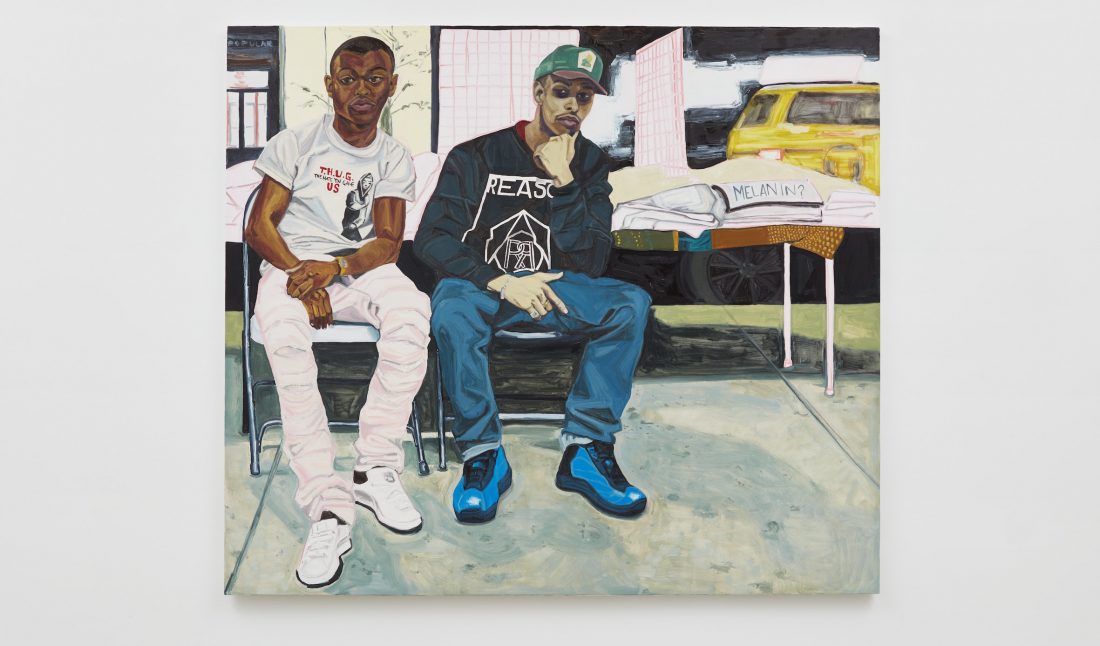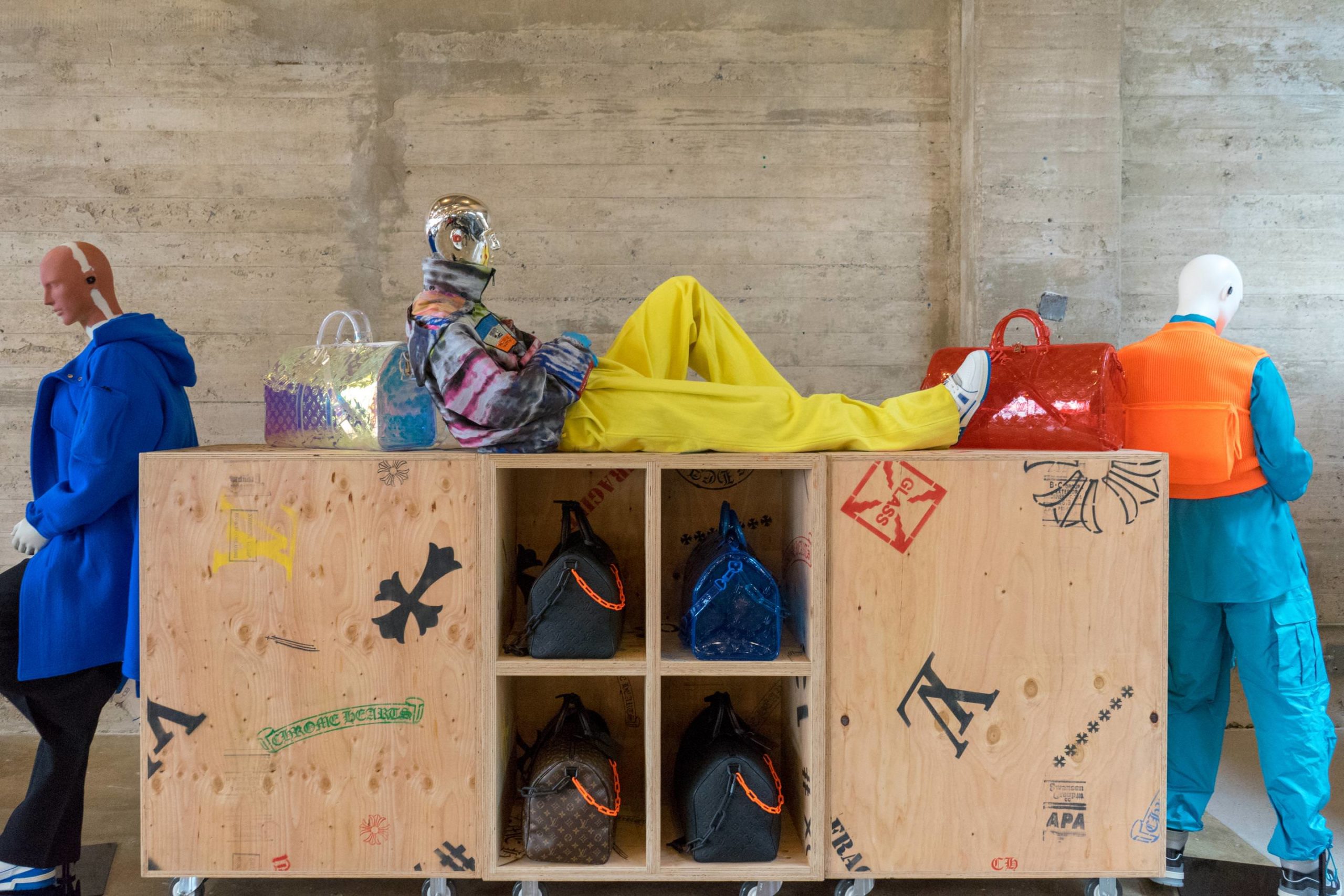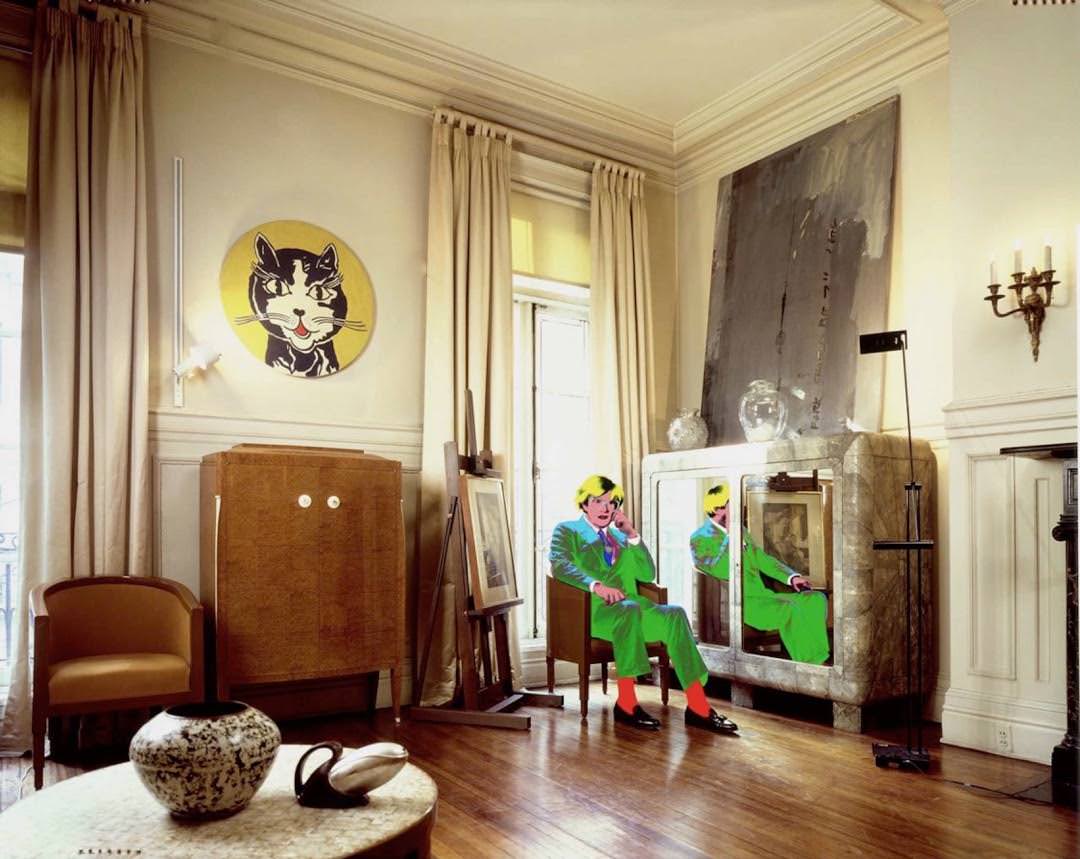Jordan Casteel’s “Nights in Harlem” exhibition at Casey Kaplan in New York last fall was a triumph. It was her first with the gallery, and it was praised across the board, by critics, artists, and collectors. One of the works from the show, Q (2017) was featured on the cover of Frieze’s December issue. At the age of 28, Casteel was experiencing a good measure of success.
“Nights in Harlem” included large-scale paintings of black male subjects at night—sitting, standing, posing—in the neighborhood she became familiar with during a 2015 artist-in-residence program at The Studio Museum. Casteel introduces herself to the men, explains that she’s an artist, takes a few photos, and then uses those images to create her paintings.
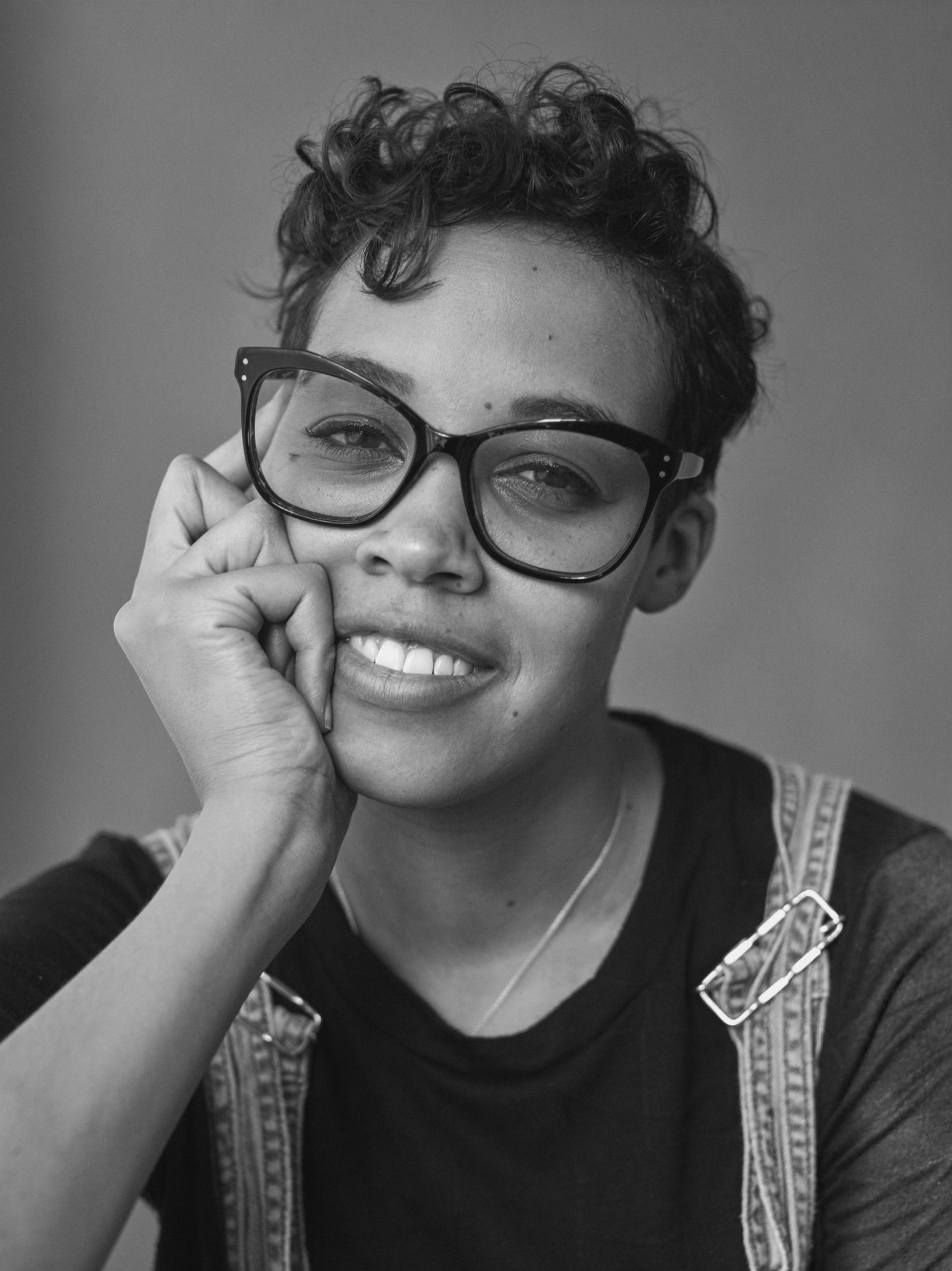 Photo by David Schulze
Photo by David Schulze
For a few years now, she’s focused on painting black men, their gaze meeting the viewer’s in a way that demands attention and a moment of reflection. Choosing to set this series at night resulted in a palette and glow that even Casteel was not expecting. As one of her subjects, Zen, pointed out, her work emphasizes the power of being seen, looking, and just being.
Whitewall met the artist in her studio early this year to learn what it’s like to make people really see someone.
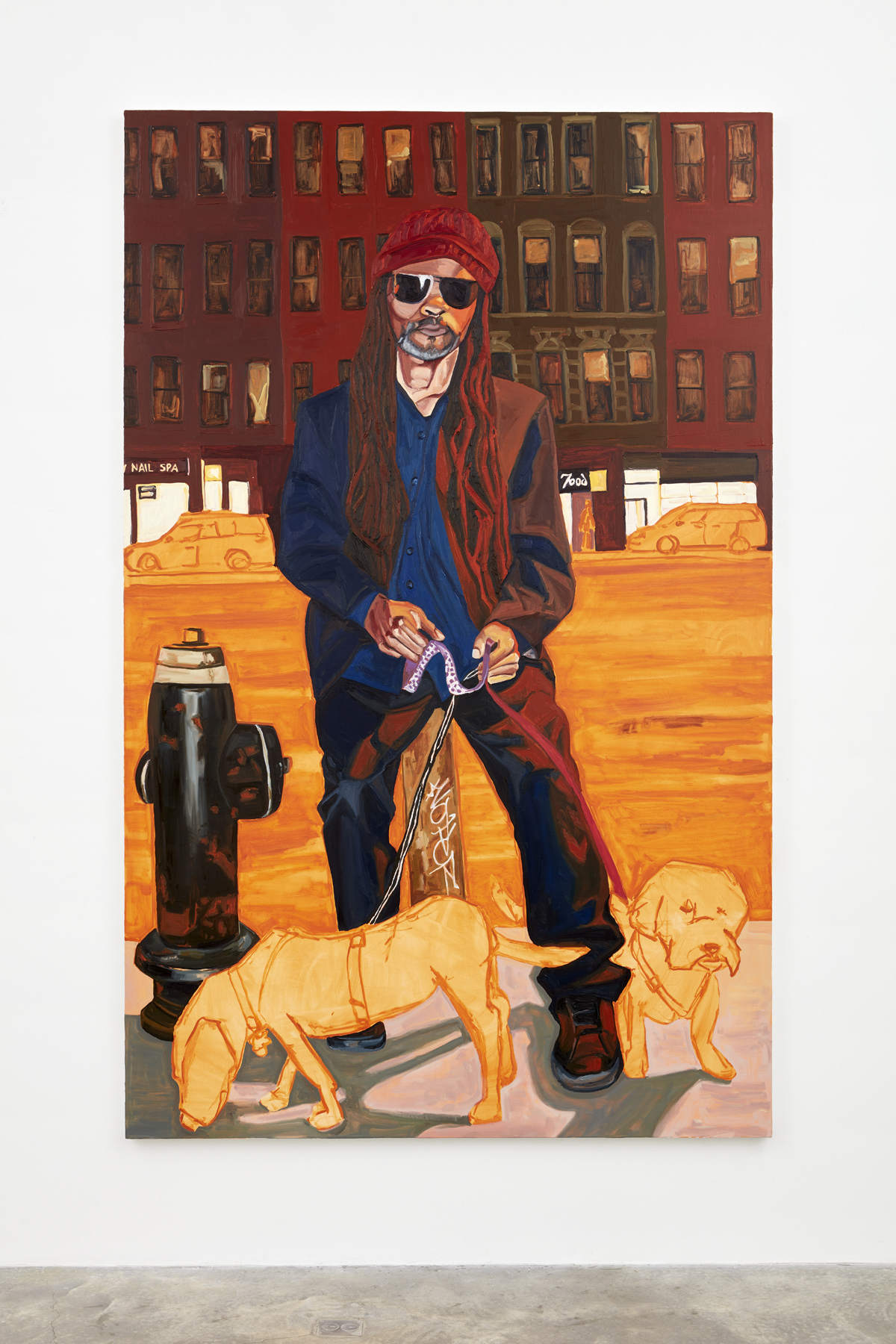 Jordan Casteel
Jordan CasteelZen
2017
Oil on canvas
95 x 60 inches
Photo by Jason Wyche
Courtesy of the artist and Casey Kaplan, New York
WHITEWALL: You’ve talked about being in Gloucester, Massachusetts—a town with a large white population—for a residency, learning of the Trayvon Martin acquittal, and feeling isolated. How did that experience while you were finishing your Yale MFA lead to a switch in your work?
JORDAN CASTEEL: I think it led more than anything to a reconnecting to my soul’s passion and care for others. It really tapped into my desire to share and give voice to things that I cared about. Up until that point, my time at Yale was spent figuring myself out and how to paint. And subject matter was really secondary to me trying to figure out how to have an active studio practice and to make work all the time. In Gloucester, I felt like I finally found the thing that best suits who I am and the things that I care about. It highlighted the things I was noticing with my family. It highlighted the way I was seeing the world and gave me insight into how to bring that into my practice.
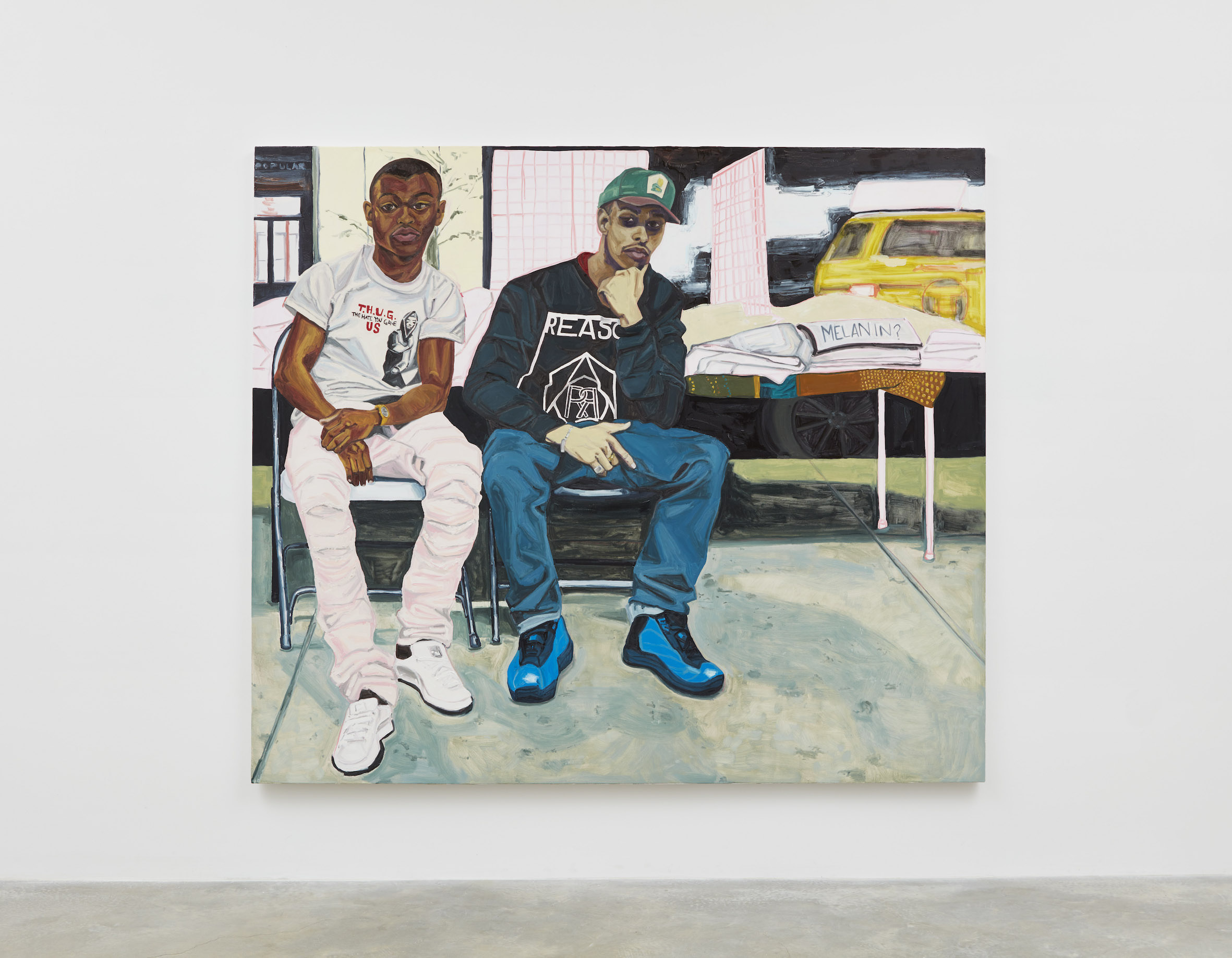 Jordan Casteel
Jordan CasteelMegaStarBrand’s Louie and A-Thug
2017
Oil on canvas
78 x 90 inches
Photo by Jason Wyche
Courtesy of the artist and Casey Kaplan, New York
More than anything, it was a fire under my butt to make work that said something.
WW: It’s so striking that the men you paint are looking at the viewer. Looking at your work, we imagined how different the tone would be had you painted black men who weren’t making eye contact.
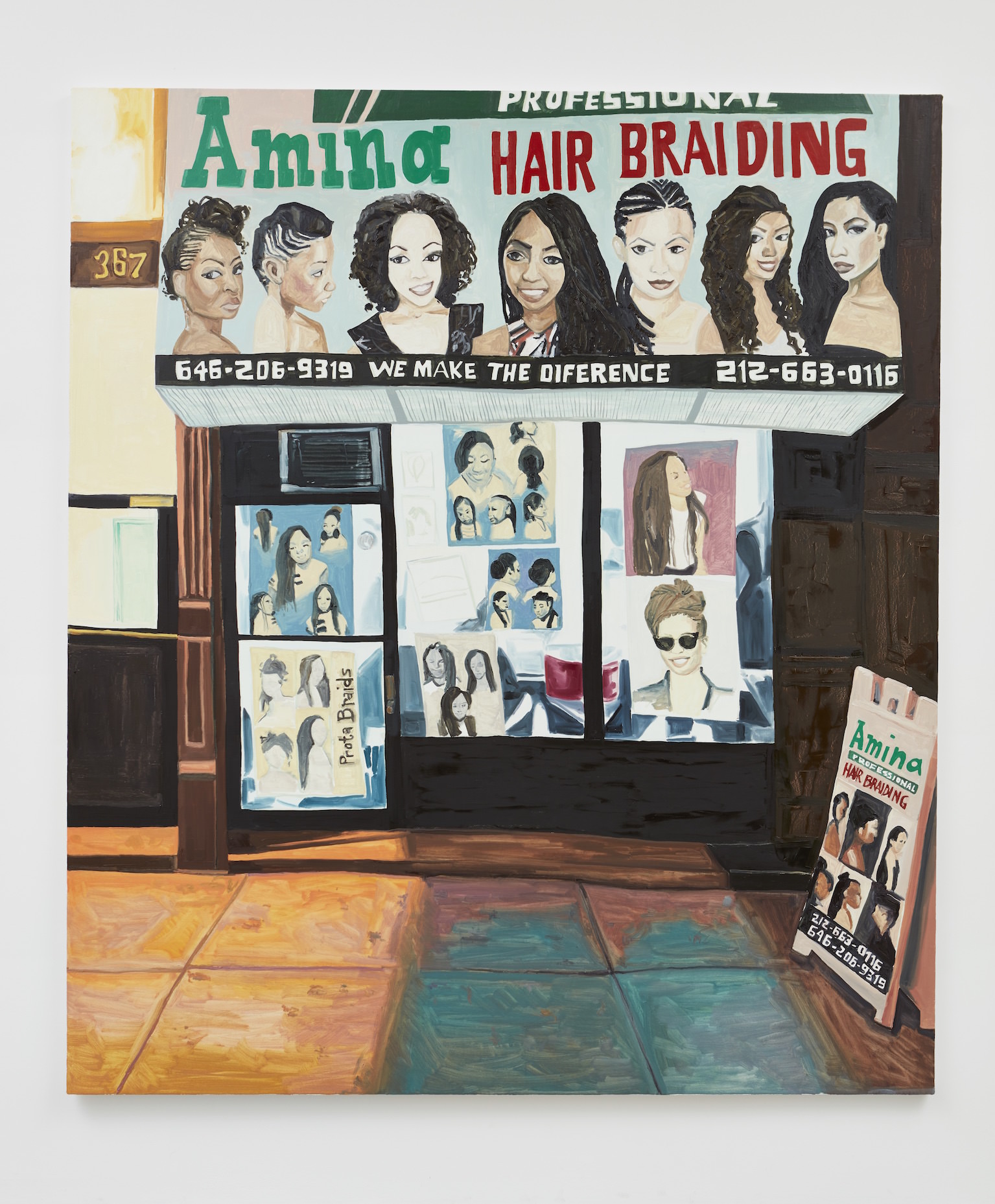 Jordan Casteel
Jordan CasteelAmina
2017
Oil on canvas
90 x 78 inches
Photo by Jason Wyche
Courtesy of the artist and Casey Kaplan, New York
JC: Right. After Gloucester, I came back and was like, “I’m going to paint black men.” I did this painting with my twin brother’s best friend. He was seated in front of my mom’s house wearing a “You Mad” T-shirt, and a Falcons fitted hat. The conversations I was having in my studio were really focused on what he was wearing and not as much focused on who he was as a person. I felt clear at that time that dealing with the humanity of the people that I loved was the most important part. So any distractions needed to be disregarded. Somebody suggested removing the clothing if it’s such a distraction for the viewer. I was hesitant to do that because the black male body historically has been taken advantage of and hypersexualized or villainized. The gaze was a very intentional decision. If I was going to remove the clothing, there were other things I needed to do to counteract the potential that the bodies would be objectified in any way.
Having the direct contact of the eyes is an intimate space to hold. But it felt like a really important one. That was the beginning of thinking about the gaze as holding space.
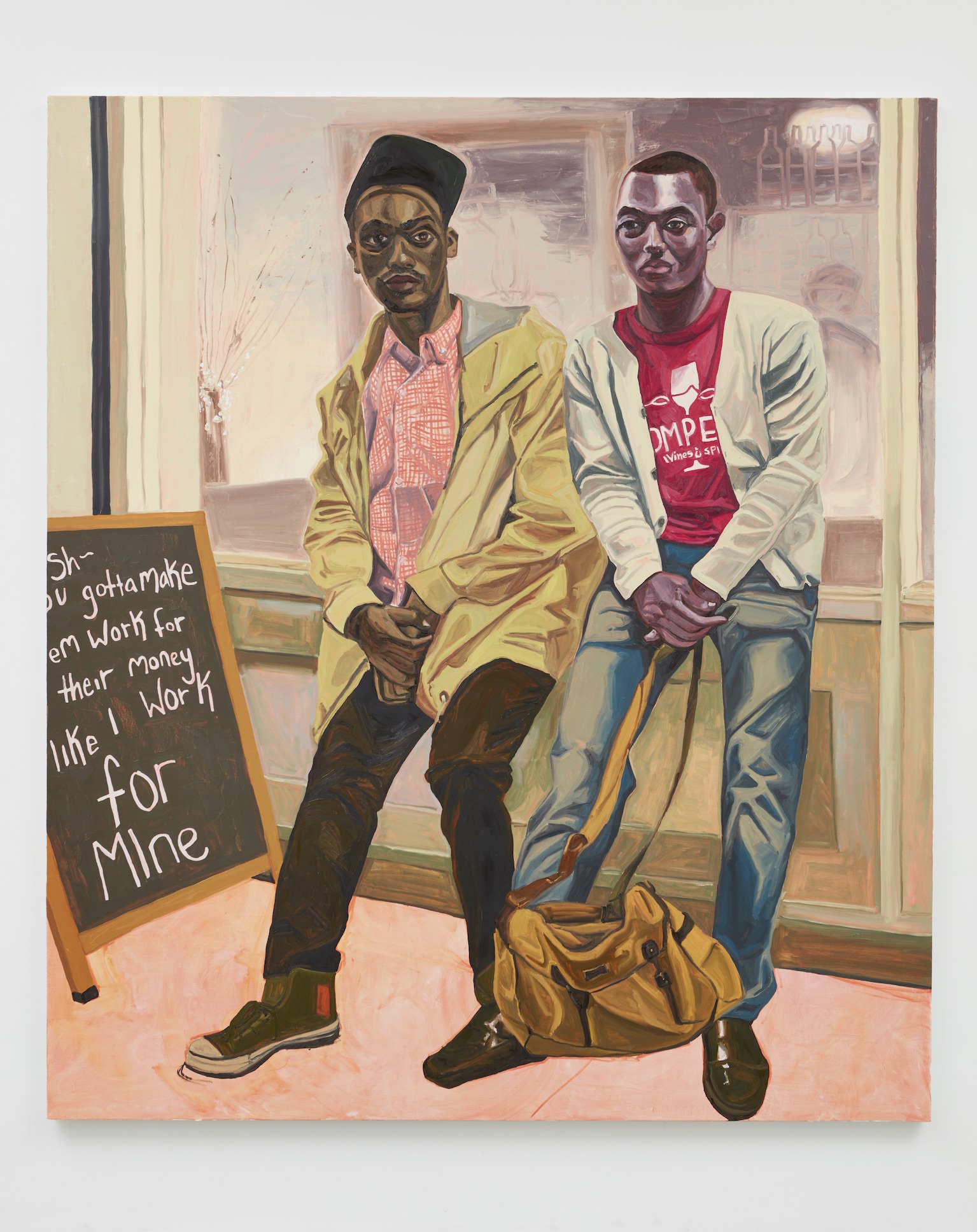 Jordan Casteel
Jordan CasteelJoe and Mozel (Pompette Wines)
2017
Oil on canvas
90 x 78 inches
Photo by Jason Wyche
Courtesy of the artist and Casey Kaplan, New York
Now my thinking around it has continued to evolve. Particularly in thinking about how these works travel beyond my studio, that they continue to have an active stance in whatever space they occupy. There’s no denying their presence wherever they go. Between the scale and the gaze, they’re commanding of time and space and energy within whatever context they go to.
WW: They allow us to make the connection. You have to look back at this person in the eye.
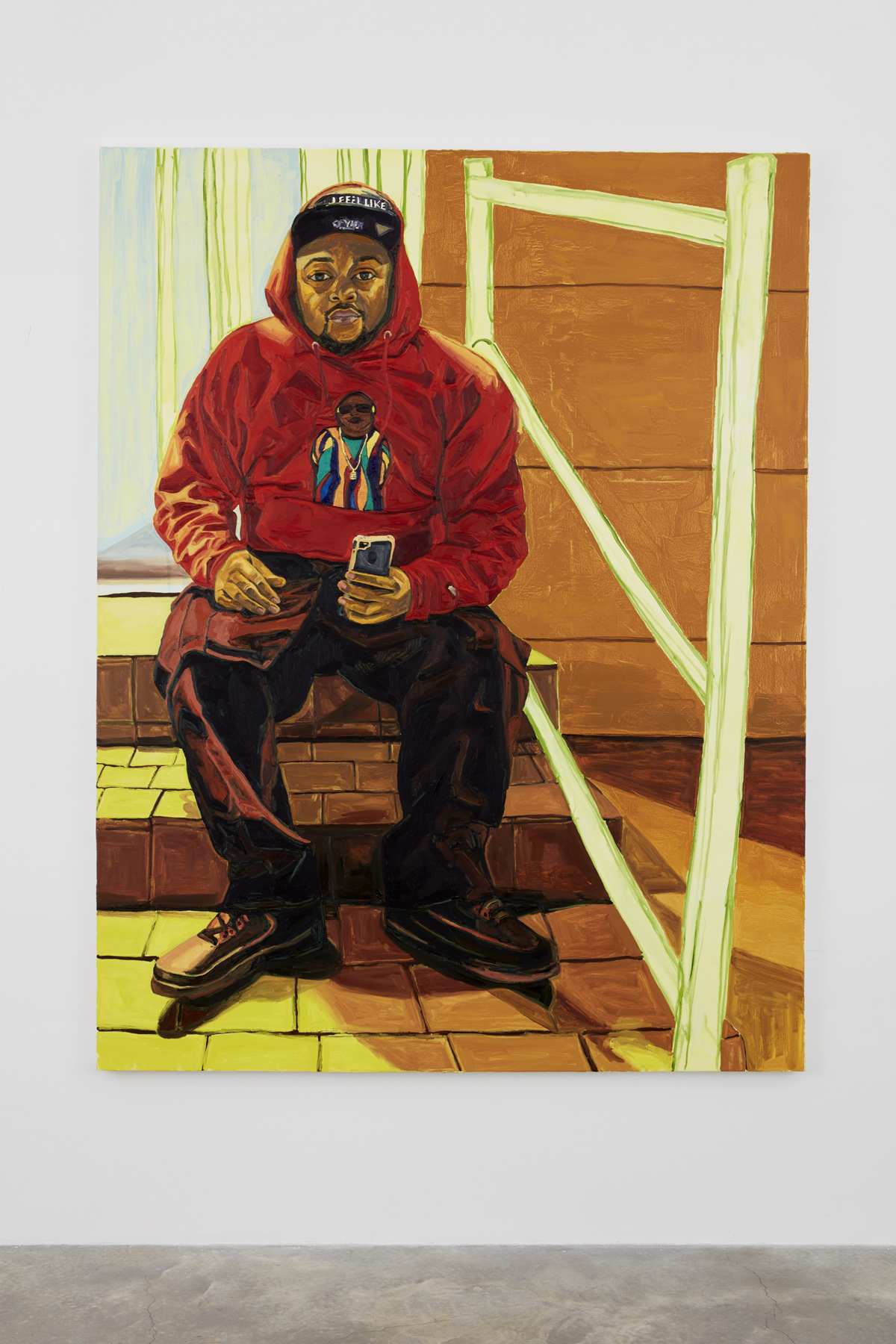 Jordan Casteel
Jordan CasteelQ
2017
Oil on canvas
78 x 60 inches
Photo by Jason Wyche
Courtesy of the artist and Casey Kaplan, New York
JC: It is so deeply about taking the time to slow down and what it means to make eye contact, especially in a place like New York. It’s this awkward juggling act. We occupy tight spaces together, but we don’t want to look each other in the eye because there’s an openness and vulnerability that is exuded from that action. It was important for me to come out of my own comfort zone, which is more introverted than extroverted, and to require other people to look people in the eye that they walk past every day.
WW: You have a very social way of gathering sources. You’re engaging with the subject, explaining that you would like to take their portrait and paint them. And then you’re coming back to the studio and spending a lot of time alone, making these works. What’s that split like for you?
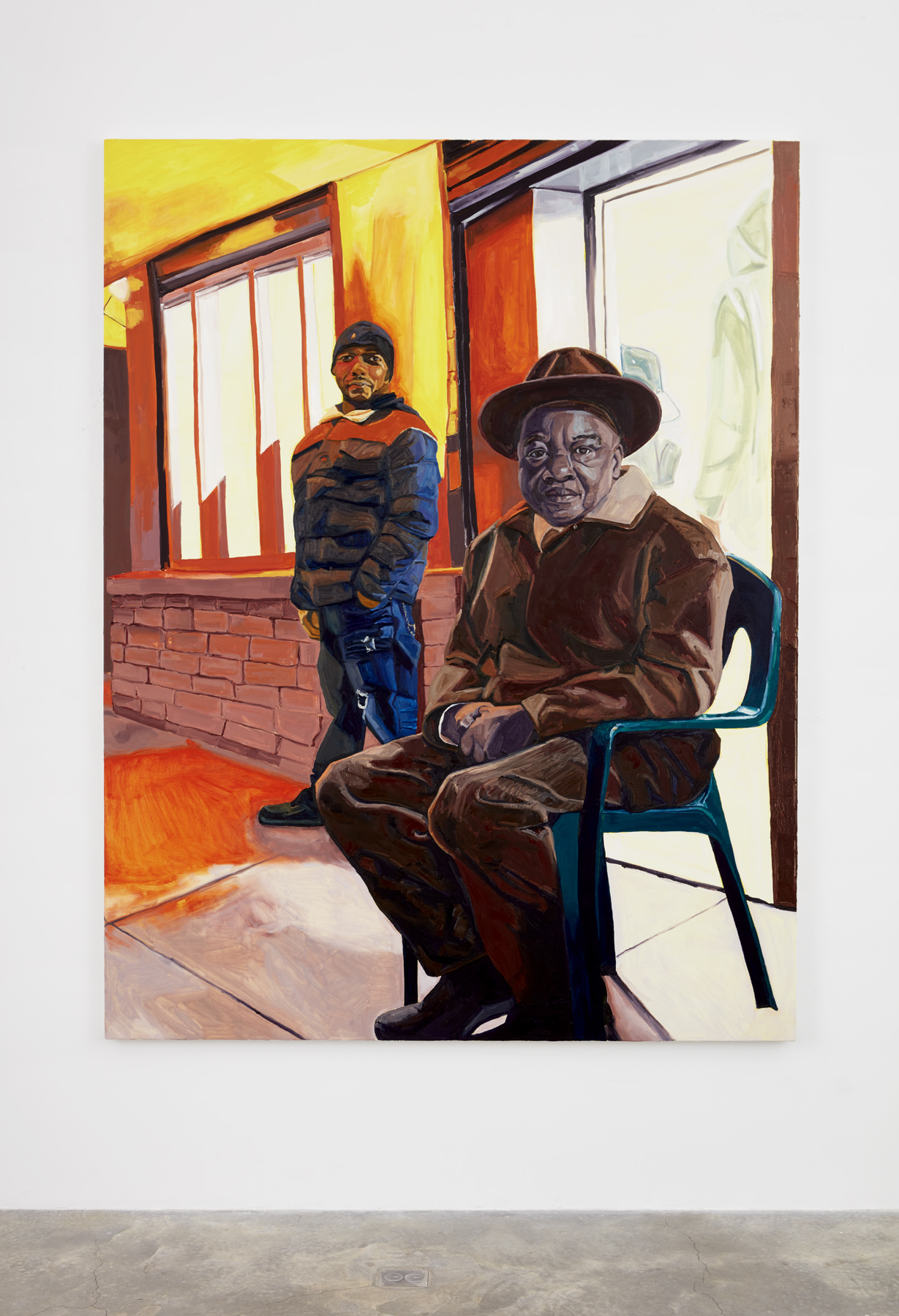 Jordan Casteel
Jordan CasteelHarold
2017
Oil on canvas
78 x 60 inches
Photo by Jason Wyche
Courtesy of the artist and Casey Kaplan, New York
JC: At least the past few shows have come from just walking down the street and seeing people occupying the space and being curious about what it is, who they are, and what it is that brings them there. I am literally just walking up to somebody and being like, “Hi, my name is Jordan. Can I talk to you? I’m a painter. I’m doing this project. Would you mind if I take your photograph? Here are some paintings.” I immediately whip out on my phone, the previous stuff I’ve done to give some sort of context, and explain that I’ll give them the photographs I take. I always make a point of getting their contact information and sharing the photographs with them to do whatever they want with. That’s, like, 20 minutes max I’m spending with somebody. I’m just clicking away for a few minutes. It’s a very communal process. It’s one where I want it to be collaborative. I don’t necessarily give direction.
But when I come back to the studio, I print up to five photographs. I’m not going in the computer and editing anything. It’s just a reference tool to reignite what it was that I felt when I was in the moment with somebody. That can hopefully spark within me the memory of what it felt like to be in someone’s presence. I’m able to really investigate who someone is through a deep slowing down of looking—from their fingernails to their gaze to the things that they’re wearing to the folds on their shirts.
WW: Can you tell us about your choice of color?
JC: I use color aids to determine the palettes. I determine the palette before I even start. I meticulously choose the mood of the painting or how color is going to facilitate some of these experiences with the painting in advance. It also pushes me to think about colors outside of my own toolbox, colors that I find myself becoming comfortable with. It’s a device for me to push and play and think about how color can be used in different ways to tell a story, and finding the things that traditionally one would see as not going together and making them work.
WW: What did you experience from “Nights in Harlem” that you weren’t expecting?
JC: I wasn’t prepared for the way that light functioned in the show at Casey Kaplan. The glow. In some ways, part of the decision to go in at night was me sheerly thinking about how color would change and how light would affect the paintings.
WW: Did you find you could play with color even more?
JC: Exactly, yes. There’s more directive light, and there’s very specific light. There was a lot of blue neon light and this yellow-orange light. I don’t think I initially realized how pronounced that would be. As the show evolved, I was like, “Oh, man, this is really intense and kind of beautiful the way that these are coming together.” They almost felt otherworldly, like a universe that was uniquely their own. I really liked that electric sense that the paintings provided—that they were elevated into another dimension, potentially.
WW: And you invite your subjects to see the final work, right?
JC: Inviting people back to see the work is pretty magnificent. That’s a moment where I become vulnerable. I’m always a little nervous about how they’re going to feel seeing themselves portrayed through somebody else’s lens. I’m always in here thinking about that. It becomes this thing that is monumental and experiencing that, for me, is emotional—I can only imagine what that’s like to walk in a space where you are so pronounced on the walls.
WW: In the video Art 21 did with you, one subject, Zen, said, “There’s value in just being.” Which also made us think there’s value in just seeing. Knowing that you’re seen.
JC: He couldn’t have said it better, really. He nailed the essence of what this work is. People walk past the men in these paintings every day. What does it mean to make someone see someone? There’s something beautiful in just being. These aren’t trying to be anything more than who these people already are. I am given the pleasure and the honor of allowing to facilitate that to a broader spectrum.
WW: What’s that like for you, to see them see themselves?
JC: It’s overwhelming. The first time I had one of the subjects in Harlem, James, he was the first subject that came to see his paintings, in this way. Previously at Yale, there was a third degree of separation at least [with the subjects]. But this was very much walking up to strangers.
So I was bugging James about it for a week. And when he came he stood in front of the painting, and I was like, “James, what do you think?” He was like, “I thought this was going to be a drawing! This is huge! I gotta go get my wife!”
He literally runs out of the studio. Maybe 20 minutes I see somebody point out a woman to me. She runs up to me and gives me this huge hug and proceeds to tell me, “Thank you for seeing him as I’ve always seen him.” I do get emotional every time I think about that because it epitomizes the essence and the soul and the heart of this work. She really verbalized that this was beyond me—that this was a gift that I could have never foreseen, that her gift of having him as her husband and her partner then got shared with the world. I have maintained one of the most beautiful relationships with them ever since. They have been really important staples of my life since then. They invited me into their home.
The greatest gift of all comes in the relationships I’ve gained. Living in New York, in this place where I felt really isolated, I was feeling unseen in a lot of ways. A lot of us do. But this gift of meeting kindred spirits and building community for myself has a really profound ripple effect. I tell that story a lot because it epitomizes the soul of this work for me.
This article appears in the spring 2018 Future Issue of Whitewall, out now.






